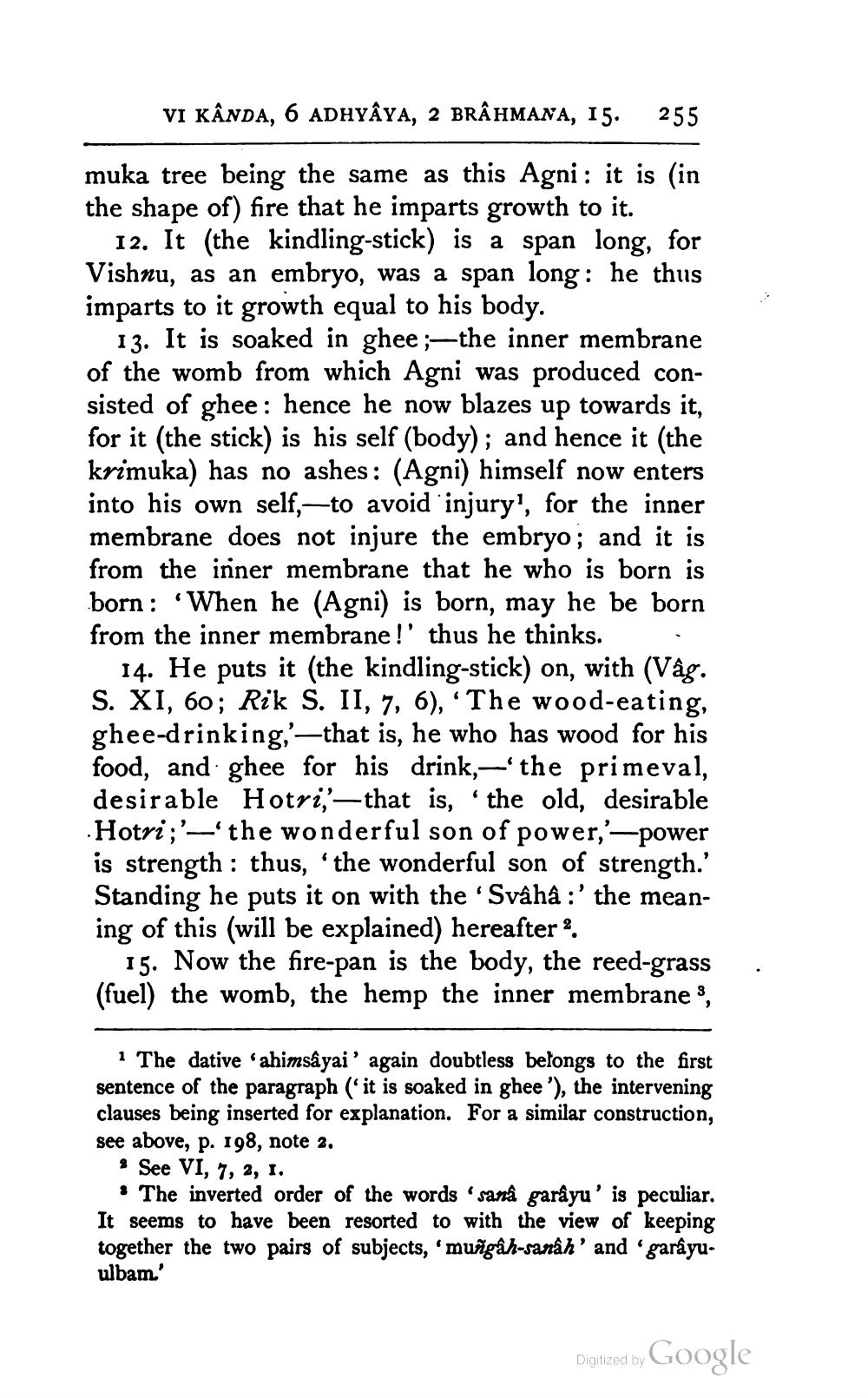________________
VI KANDA, 6 ADHYÂYA, 2 BRÂHMANA, 15. 255
muka tree being the same as this Agni: it is (in the shape of) fire that he imparts growth to it.
12. It (the kindling-stick) is a span long, for Vishnu, as an embryo, was a span long: he thus imparts to it growth equal to his body.
13. It is soaked in ghee;-the inner membrane of the womb from which Agni was produced consisted of ghee: hence he now blazes up towards it, for it (the stick) is his self (body); and hence it (the krimuka) has no ashes: (Agni) himself now enters into his own self, to avoid injury', for the inner membrane does not injure the embryo; and it is from the inner membrane that he who is born is born: 'When he (Agni) is born, may he be born from the inner membrane!' thus he thinks.
"
14. He puts it (the kindling-stick) on, with (Vâg. S. XI, 60; Rik S. II, 7, 6), 'The wood-eating, ghee-drinking, that is, he who has wood for his food, and ghee for his drink, 'the primeval, desirable Hotri,'-that is, the old, desirable Hotri;'-'the wonderful son of power,'-power is strength: thus, 'the wonderful son of strength.' Standing he puts it on with the 'Svâhâ:' the meaning of this (will be explained) hereafter 2.
15. Now the fire-pan is the body, the reed-grass (fuel) the womb, the hemp the inner membrane 3,
1 The dative ahimsâyai' again doubtless belongs to the first sentence of the paragraph (it is soaked in ghee '), the intervening clauses being inserted for explanation. For a similar construction, see above, p. 198, note 2.
2 See VI, 7, 2, I.
The inverted order of the words 'sanâ garâyu' is peculiar. It seems to have been resorted to with the view of keeping together the two pairs of subjects, 'muñgâh-sanâh' and 'garâyuulbam.'
Digitized by
Google




